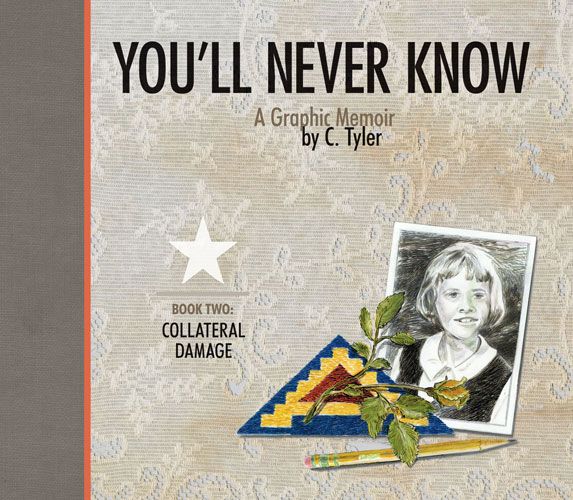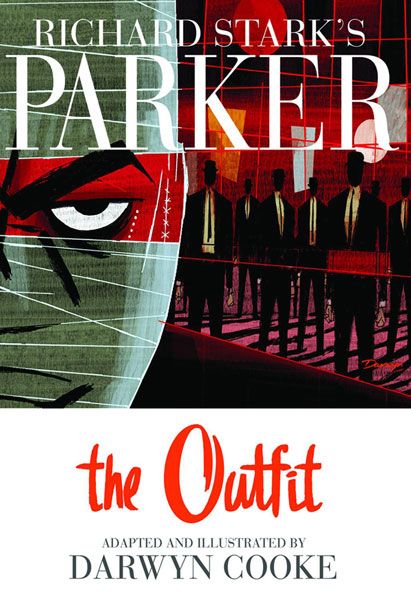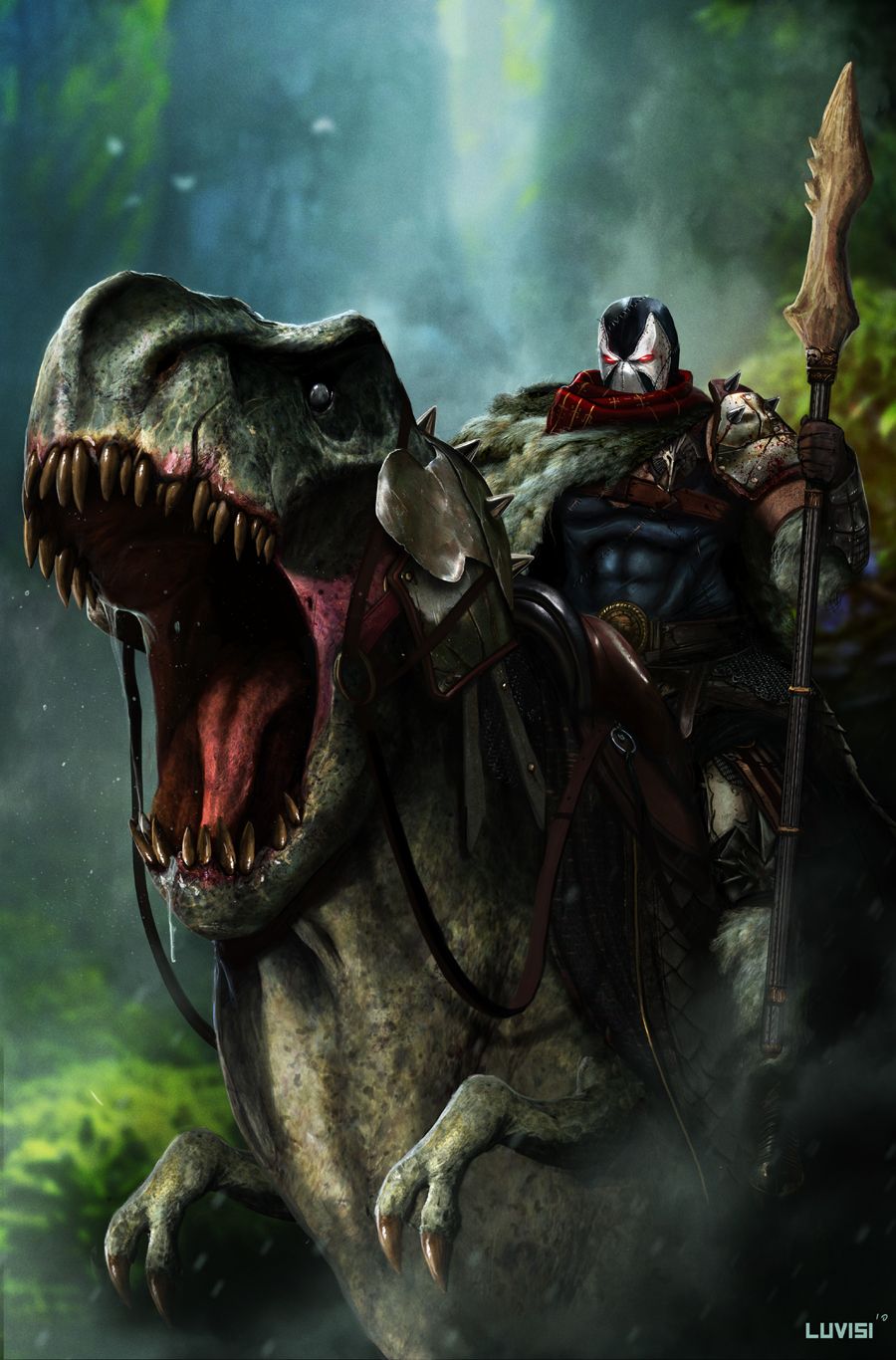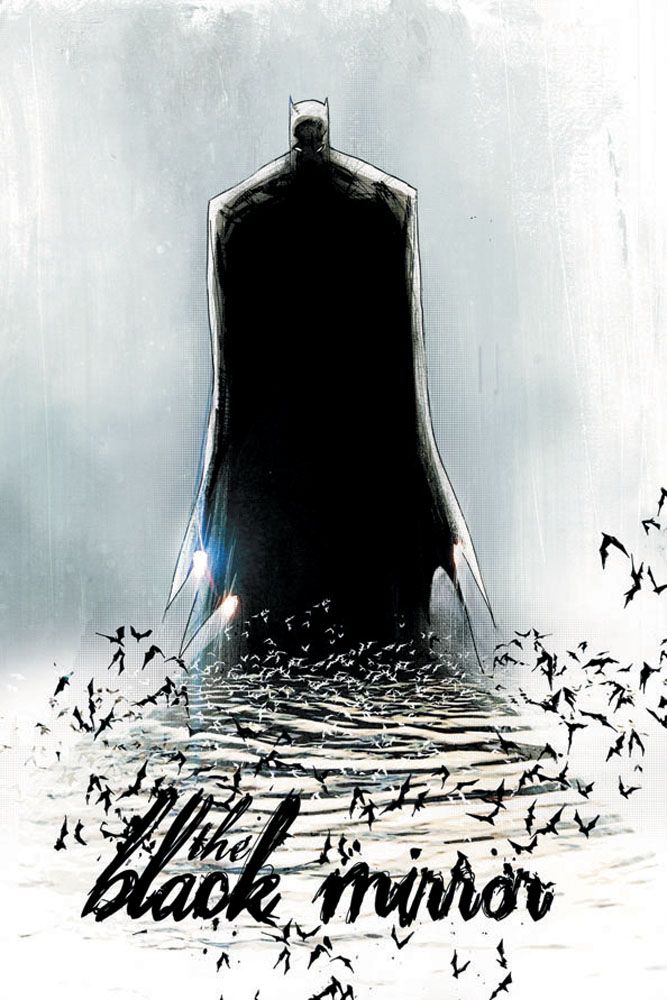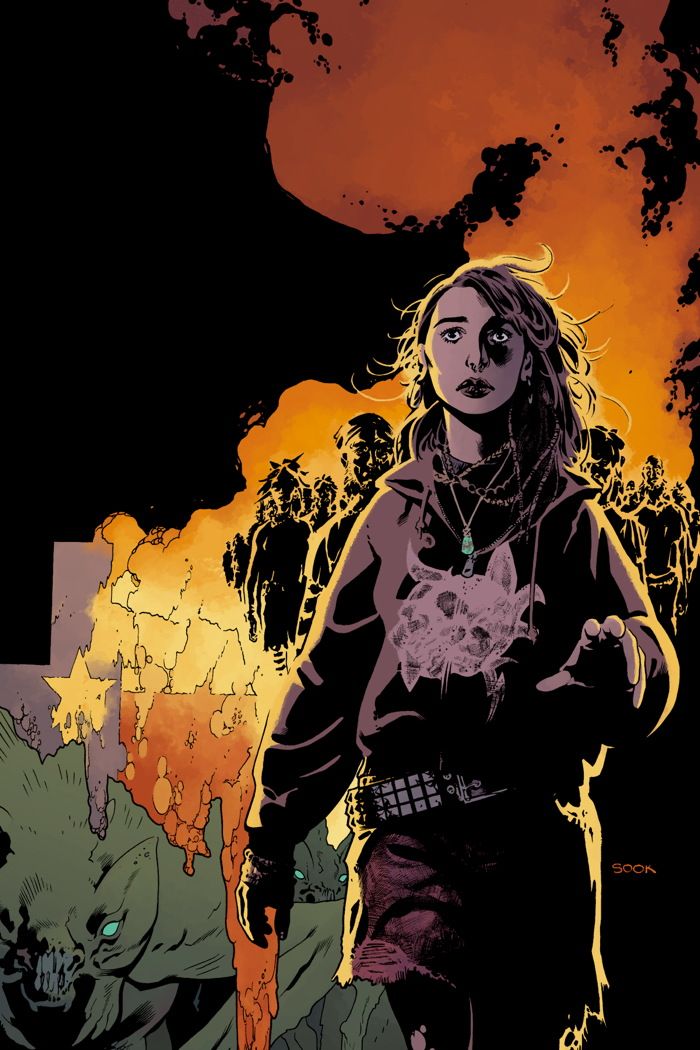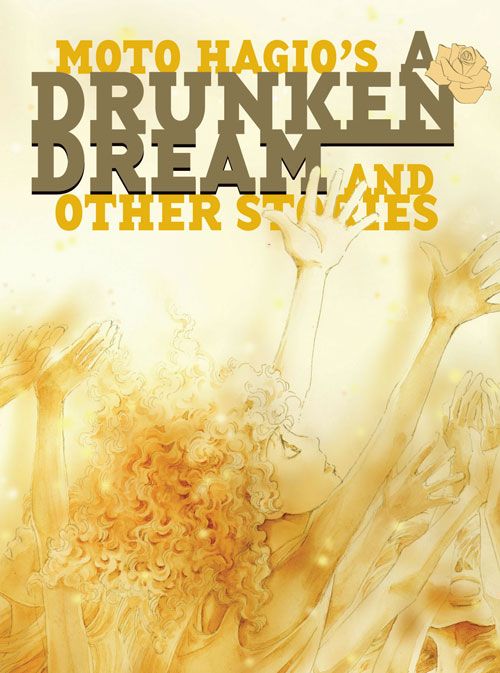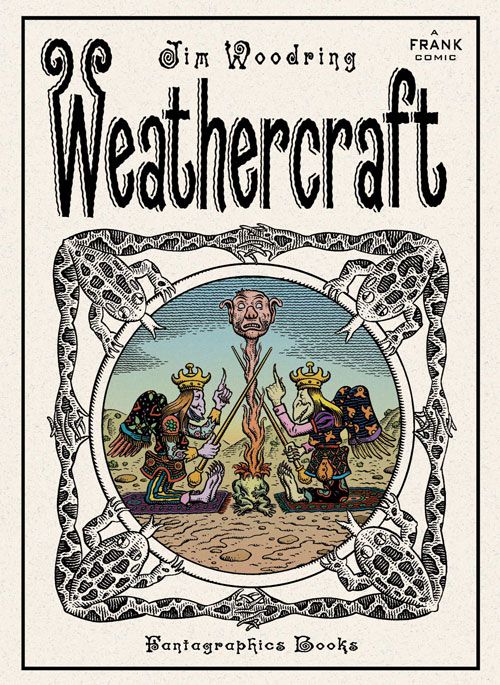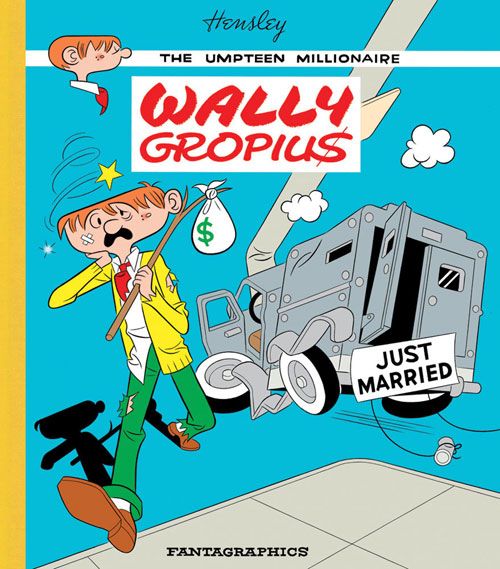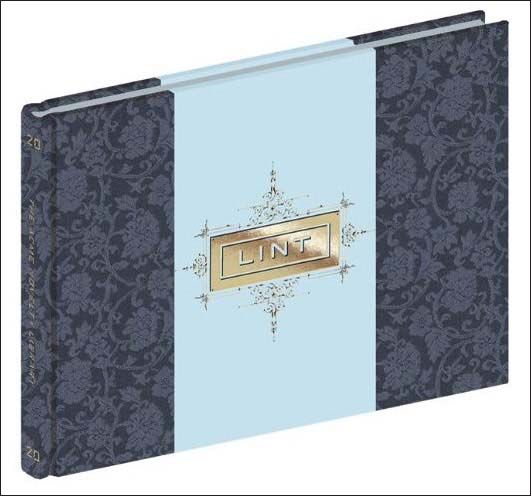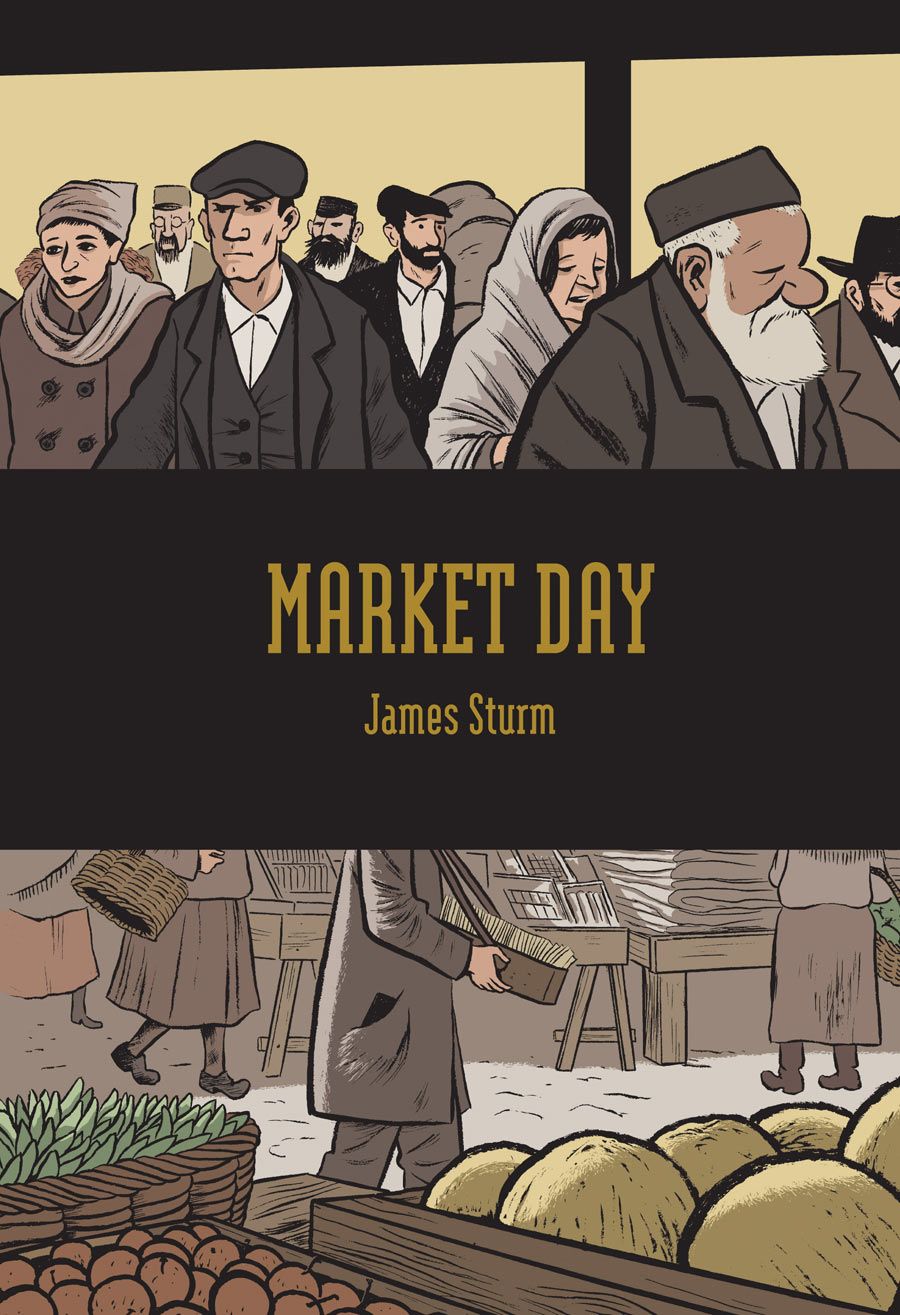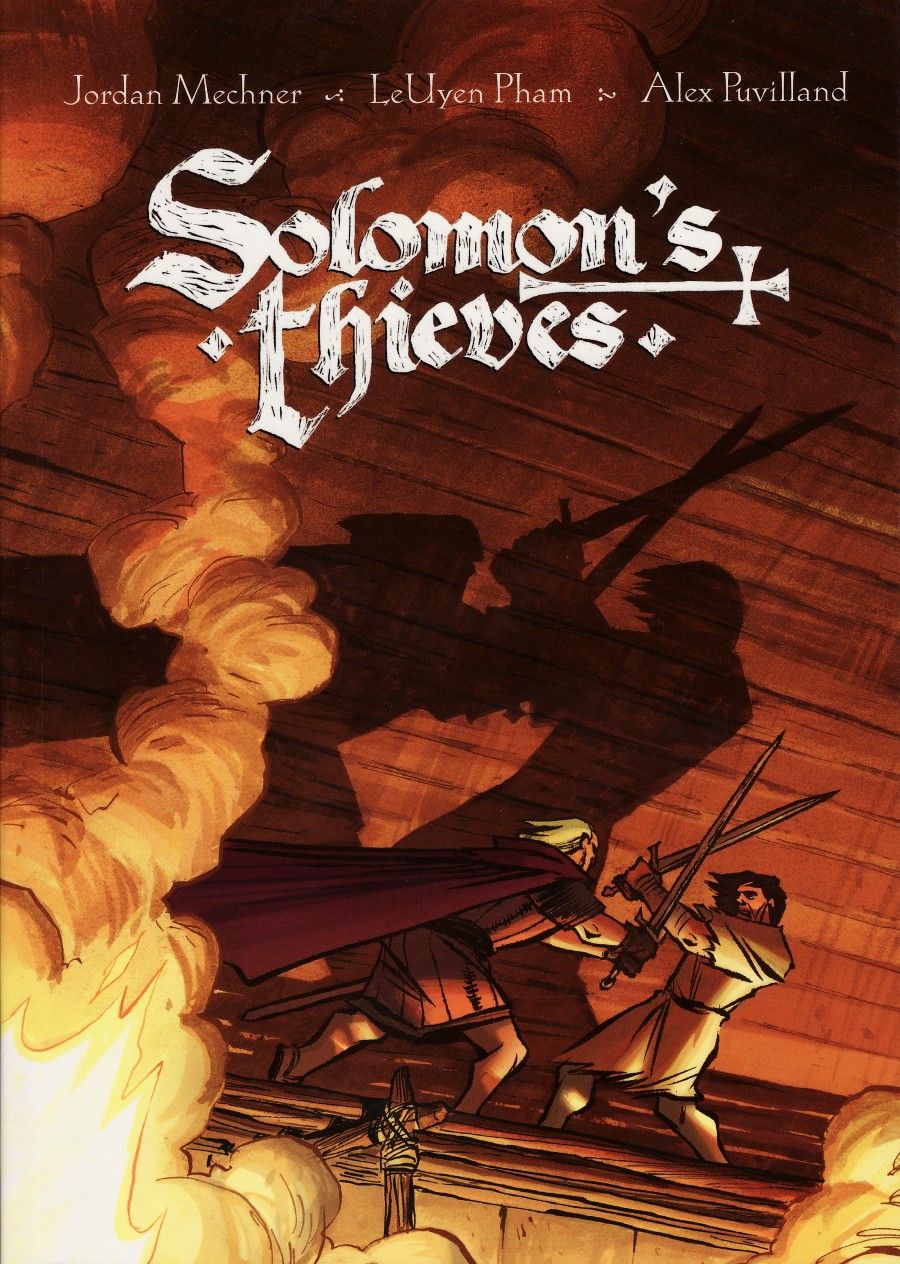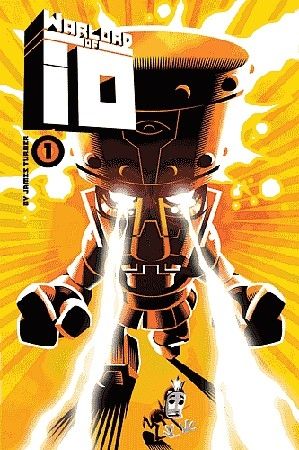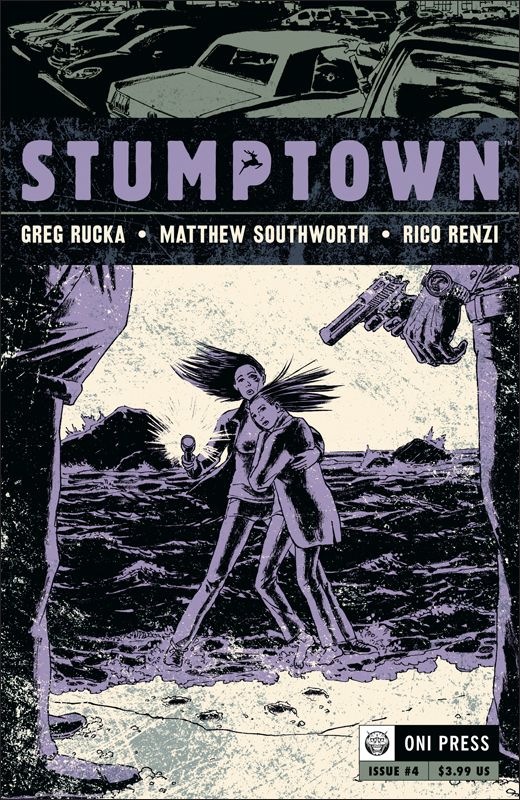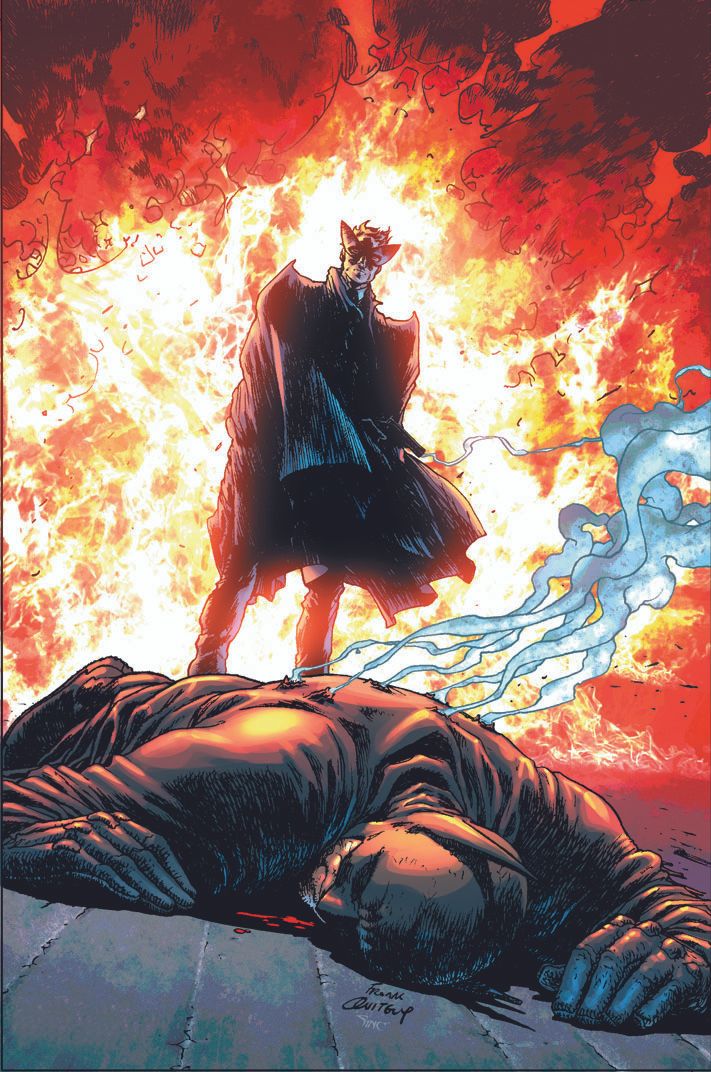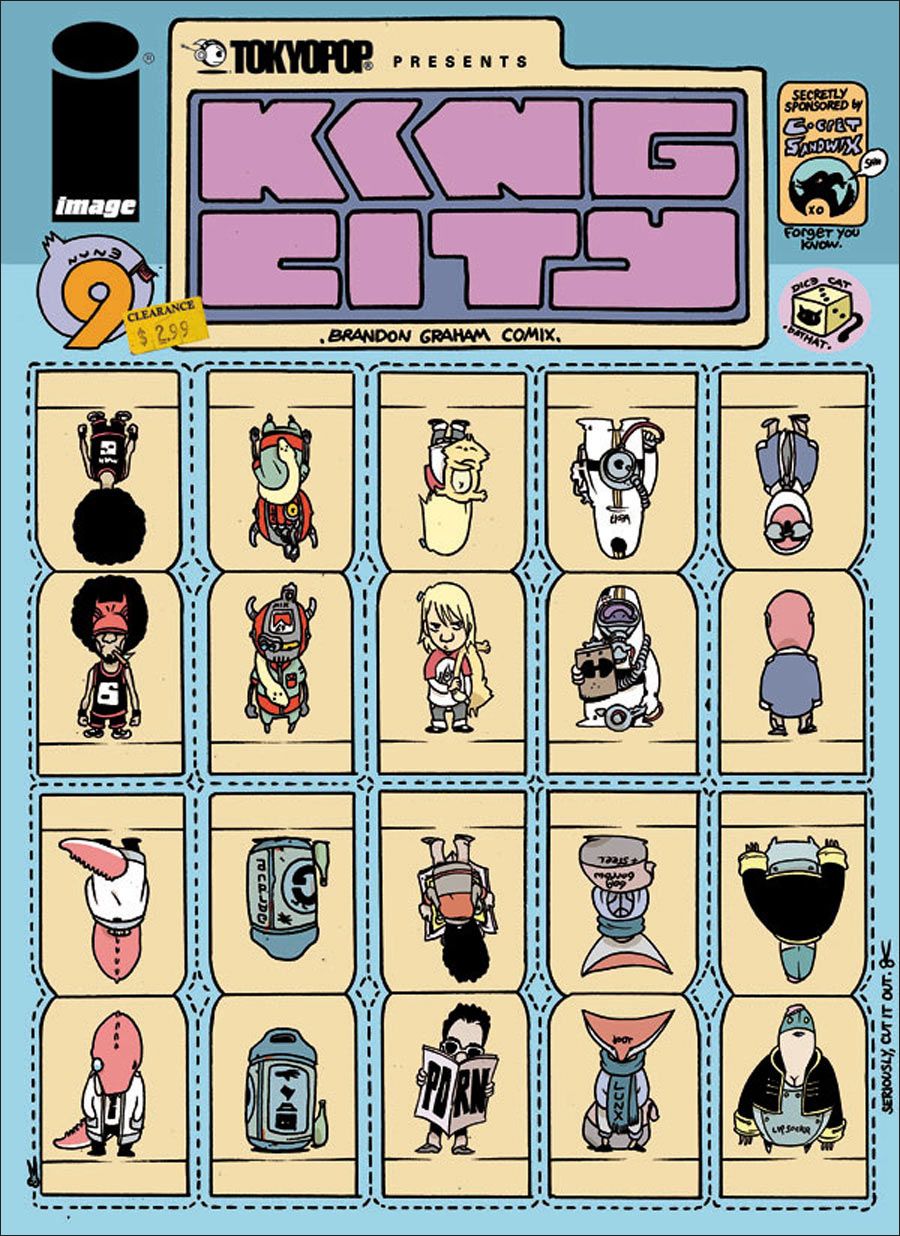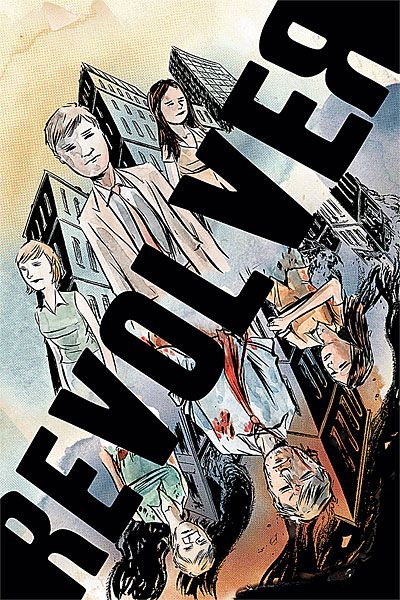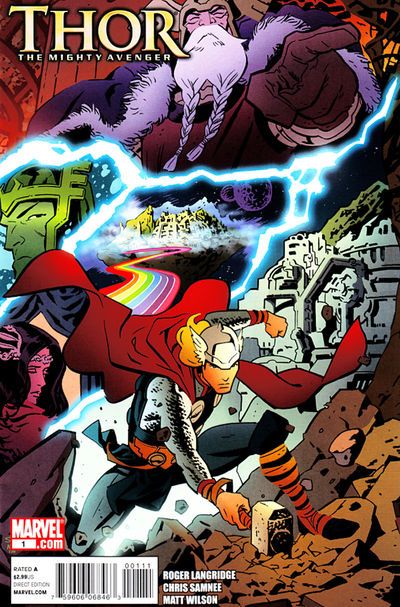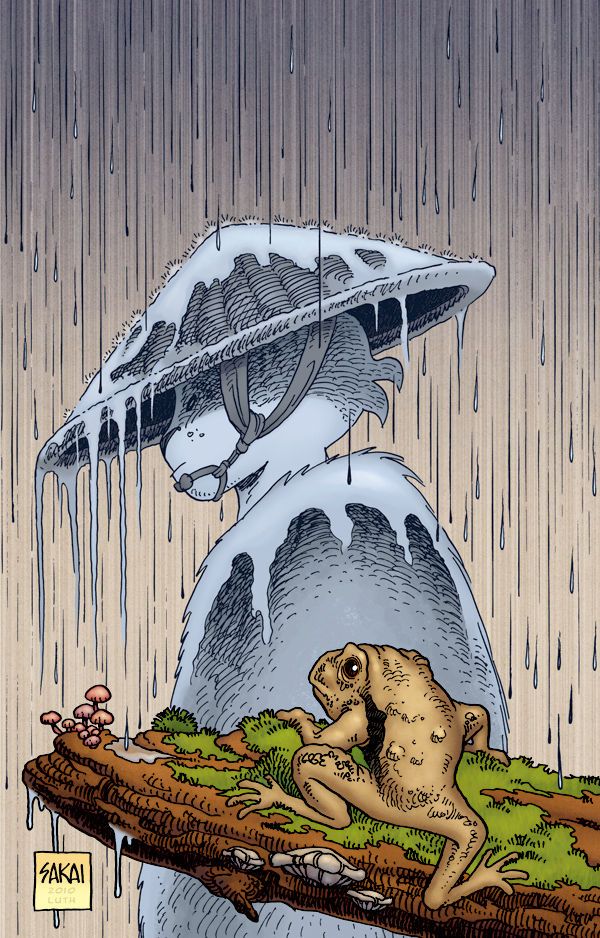As I said in my intro for our big birthday bash, it's been a great year for kick ass comics, from Grant Morrison's tales of various Batmen to the all-ages joy of Thor the Mighty Avenger to the physically stunning Acme Novelty Library.
Here, then, are the best comics of 2010, as chosen by the Robot 6 team.
Brigid Alverson
10. All My Darling Daughters: Fumi Yoshinaga's collection of short stories about families and relationships is quirky, funny, and filled with rich detail and gesture. She can say more in three panels than some writers say in three pages of prose. This is a mature work by a supremely gifted creator.
9. Twin Spica: A lovely manga about a young girl who wants to be an astronaut, Twin Spica stretches outside the usual boundaries of children's stories and has moments of true poetry and grace. Kou Yaginuma's art goes far beyond the usual standards of manga, creating unforgettable characters and settings that really draw the reader in.
8. Drinking at the Movies: With a sharp eye and plenty of self-deprecating humor, Julia Wertz chronicles her first year in New York, a year of crappy jobs, terrible apartments, and good friends. Wertz is a great raconteur who manages to be entertaining and a bit deep at the same time.
7. Set to Sea: The story of a would-be poet who is shanghaied and learns about life at sea the hard way, Set to Sea is drawn in a series of single panels, each of which is a miniature masterpiece on its own. It's a singularly economical way of telling a story, and Drew Weing makes each of his panels into a tight little world of its own.
6. Bug: Most gag comics are hit or miss, but every single one of Adam Huber's daily strips hits the mark, with an offbeat, slightly twisted sense of humor.
5. Guinea Pig, Pet Shop Private Eye 1: Hamster and Cheese: A charming children's book about a pet store filled with mislabeled pets, this story is simple enough for young readers but filled with witty writing and quirky characters that grownups can appreciate as well.
4. You'll Never Know, Book Two: Collateral Damage: Carol Tyler's family saga continues, as she picks apart her father's experiences in World War II, her reaction to the dissolution of her marriage, and the other ups and downs of her complicated family. Tyler skillfully handles multiple strands of her story, using a variety of styles and formats for different episodes, slowly building a complete picture from several different sources.
3. Parker: The Outfit: Darwyn Cooke's art is like a time machine, bringing the reader back to the early 1960s not only with the settings of his hard-boiled crime story but also with the style itself. In this second volume, Parker heads out to get revenge on a crime syndicate, but Cooke's light touch, including several capers told as magazine stories, keeps this story entertaining rather than letting it get overly dark.
2. Hereville: Set in an Orthodox Jewish community, Barry Deutsch's story of a young girl who dreams of slaying dragons someday mixes fantasy and everyday life in a comfortable and convincing way. Deutsch uses a simple drawing style but animates his story with creative layouts that not only carry the action but also hint at his characters' thoughts and feelings.
1. Two Cents Plain: This is an amazing memoir that didn't get anywhere near enough attention this year. Constructed as a series of vignettes, it tells the story of the author's parents and the soda fountain they kept in Brooklyn for decades. Author Martin Lemelman mixes nostalgia and realism, bringing in period touches such as drawings of vintage toys and candy but never shying away from the grittier details such as his parents' anger, their poverty, and the rats that swarmed through their apartment.
Tom Bondurant
10. Secret Six (written by Gail Simone, drawn by Jim Calafiore). I used to worry that Gail Simone's merry band of miscreants would suffer if it ever lost the bromance between Deadshot and Catman, the bond shared by Bane and Scandal, or any of the not-really-a-team's interpersonal relationships. However, now well into its third year as an ongoing series, the title has almost developed past them, into cheerful amorality in monthly installments. Secret Six takes the idea of super-people to blackly comic extremes, letting its cast run wild in all manner of hostile environments -- and without forgetting about the relationships.
9. American Vampire (written by Scott Snyder, drawn by Rafael Albuquerque). Thank goodness for scary vampires. That pretty much sums up my feelings about this series, which downplays the sexual metaphors for some good old-fashioned bitin’ and killin’.
8. Justice League: Generation Lost (written by Keith Giffen and Judd Winick, drawn by various artists). Thank goodness, too, for a miniseries which gives Booster Gold, Captain Atom, and Fire and Ice a long-overdue spotlight -- not as jokes, not as comedians, but as honest-to-goodness heroes in an unadulterated superhero story. As funny as the JLI reunions have been, JL:GL reminds readers that these characters weren’t all bwah-hah-hah.
7. Bug (by Adam Huber). On the surface, there’s not much to Bug. It’s a four-panel gag strip where anthropomorphic insects are the players. That’s selling it short, though; because the jokes are always funny. Bug may not be the most profound comic strip out there, but it’s never boring. I eagerly await the print collection.
6. Madame Xanadu (written by Matt Wagner, drawn by various artists). This book was too superhero-y for Vertigo and too “independent” (i.e., not crossover-friendly) for the DCU; but that let it carve out a quirky little niche which I thought was just right. I was one of the few, evidently, since the final issue came out in November. Still, while it lasted, it let Wagner and his artists explore one of DC’s lesser-known magical characters, incorporating familiar superhero lore where appropriate. It was a nice blend of elements, and it’s something DC could use more of.
5. The Muppet Show (by Roger Langridge). Where Bug excels at the four-panel gag strip, each issue of the Muppet Show comic virtually explodes with jokes, in all shapes and sizes. Each issue is a self-contained story which may or may not be part of a larger arc, and within each issue are all manner of witticisms, slapstick routines, puns, character-oriented gags, etc. The way it’s all structured is worth celebrating, and the fact that Langridge makes it look so easy is just amazing.
4. Beasts Of Burden (written by Evan Dorkin, drawn by Jill Thompson). This is simply a gorgeous comic, beautiful and horrific, and utterly convincing -- both at bringing its animal protagonists to life and at pitting them against some very vile creatures. There was too little of it in 2010.
3. Detective Comics (by various writers and artists). In the fall I marked twenty-five years of reading ’Tec, which I have always thought was the more highbrow Batman series. After all, it boasted Goodwin and Simonson, Englehart and Rogers, Barr and Davis, Grant and Breyfogle, Rucka and Martinbrough, Brubaker and Zircher -- in short, many of the better-remembered Batman creative teams. J.H. Williams III said goodbye to ’Tec at the end of 2009, but Greg Rucka and Jock stuck around for a few issues to close out Batwoman’s headlining feature, and they continued to make Batwoman one of the best things to happen to ’Tec in a long time. Although much of the year was taken up with decent-to-good Batman stories, I have to say that Scott Snyder and Jock’s two issues in November and December have once again made Detective a joy for the discriminating Batman reader. Nothing against Tony Daniel’s superheroic take in the main Bat-book, but here’s hoping for a long Snyder/Jock partnership.
2. Hark! A Vagrant (by Kate Beaton). I can’t begin to say how much enjoyment I get from this comic. I have Never Learn Anything From History and can’t wait for the next print collection. Heck, I even bought a T-shirt. I show Kate Beaton’s comics to everyone I can think of, because no one should be denied them.
1. Batman: The Return Of Bruce Wayne (written by Grant Morrison, drawn by various artists). I have loved all of Morrison’s Bat-work, but this miniseries pulled it all together -- Bruce/Batman not just as the ultimate survivor, but as the ultimate story, forever leading the fight against ultimate evil. Even with scheduling problems and out-of-sequence storytelling, it all made sense, it all worked, and it all made Batman -- Batman! -- seem exciting, original, and new, all over again. Accept as much or as little of it as you want, but it won’t be rolled back, because it opens up Batman’s world even as it puts a reinvigorated Bruce Wayne back at the heart of darkness.
Sean T. Collins's Top 20 Comics of 2010
20. Boy’s Club #4, by Matt Furie (Pigeon Press) / Night Business #3, by Benjamin Marra (Traditional Comics)
I don’t know if there are any other comics around I feel more simpatico with than the flagship series of Matt Furie and Ben Marra. In Boy’s Club’s stoner/slacker sight gags and quote-laden dialoge, and in Night Business’s overpowering love for trash and sex and violence, I see myself. In some alternate earth, I’d be making comics exactly like these. Fortunately for me, I live on this earth, where someone else is there to do the work and I can just sit back and enjoy it.
19.Fandancer, by Geoff Grogan (self-published)
Taking advantage of the large scale of its pages better than any comic I read this year this side of Absolute All-Star Superman, Grogan’s latest self-published stunner crams Jack Kirby superheroics into the history of mid-to-late 20th century art and feminism by any means necessary. Inscrutable, personal, beautiful.
18. B.P.R.D./Hellboy, by Mike Mignola, John Arcudi, Guy Davis, Duncan Fegredo, and others (Dark Horse) / Invincible, by Robert Kirkman and Ryan Ottley (Image)
I read and enjoyed a lot of superhero comics this year: Captain America, Secret Avengers, Steve Rogers: Super-Soldier, The Marvels Project, Incognito, Atlas, Marvel Boy, Gorilla Man, Thunderbolts, Hulk, Incredible Hercules, Prince of Power, Chaos War, Fantastic Four, Invincible Iron Man, Ultimate Spider-Man, Ultimate Comics Enemy/Mystery/Doom, Powers, Green Lantern, Blackest Night, Brightest Day, The Flash, Superman: Secret Origin, Action Comics, Astro City, Joe the Barbarian. But here’s the thing: No superhero comics (with the exception of one you’ll find later in this list) deliver the feeling that anything, anything, can happen in their pages the way that Invincible and the comics of the Hellboy/B.P.R.D. universe do. When I begin to read the latest issue of these series, it’s with that same visceral thrill I used to get from The Sopranos, Deadwood, The Wire, Battlestar Galactica, Lost, and Twin Peaks: I simply have no idea what is going to happen to the characters this time around, no idea what will happen to their world, no idea if they’ll even make it to the end of the issue. Their creators play by no rules and are manifestly having the time of their lives doing it. That’s the feeling I wish I could get from every single other superhero comic I read. Even the good ones.
17. Afrodisiac, by Jim Rugg and Brian Maruca (AdHouse)
Far more than just a superhero/blaxploitation parody – although it’s both of those things, and awesome at them besides – Rugg and Maruca’s cleverly written, beautifully drawn, impeccably edited and designed collection of short stories about their ghetto superhero is also a rich meditation on the interplay between artist, audience, subject and society.
16. It Was the War of the Trenches, by Jacques Tardi (Fantagraphics)
French master Tardi does to the Great War what the Great War did to the bodies of millions of young soldiers: blow it wide open and root in the mess. Depicted primarily in an unyielding onslaught of widescreen panels, it’s like a slog through the trenches itself. Furious and full of contempt for war and its masters.
15. A Drunken Dream and Other Stories, by Moto Hagio (Fantagraphics)
I gasped aloud repeatedly while experiencing the sheer loveliness of this book, a collection of short stories from throughout the decades by shoujo-manga pioneer Moto Hagio. Best of all, there’s a cake beneath all that icing, as Hagio’s stories are frequently sophisticated, moving, and unwilling to pull punches.
14. The Troll King, by Kolbeinn Karlsson (Top Shelf)
Top Shelf’s Swedish invasion yields one of the happiest surprises of the year, an exploration of queerness and monstrosity that gives a method to the illustrative madness of contemporary artcomix. I have a feeling this one was underseen and underread: By all means, see it, read it, enjoy it.
13. Prison Pit Book 2, by Johnny Ryan (Fantagraphics)
Johnny Ryan journeys deeper than ever before into his inner ickiness and returns with an action-horror hybrid it’s almost impossible to “enjoy” in the traditional sense of the word – and which thereby takes those two genres in stunning new directions. Put it this way: In Fantagraphics’ Spring 2011 catalog, his next comedy collection is described in “Prison Pit’s awesome, but did you know he made humor comics too?” The tide has turned and his star is made.
12. Closed Caption Comics #9, by various (Closed Caption Comics) / Death Trap, by Lane Milburn (self-published)
2010 was a fine year for art-comics anthologies: The Fort Thunder reunion Monster, Zack Soto’s beautiful West Coast showcase Studygroup12 #4, the charming and bold British import Mould Map #1, Marvel’s increasingly tonally daring Strange Tales II, a strong year from Fantagraphics’ Mome…and that’s without even having read the newsprint anthologies pood, Diamond Comics, and Smoke Signals. Similarly, alt-horror had another tremendous year, with uncompromising and disturbing work from Renee French, Lisa Hanawalt, Michael DeForge, Nora Krug, Noel Freibert, and more besides. But my favorite examples of these two subgenres came straight outta Baltimore’s Closed Caption Comics collective. The latest installment of their flagship anthology is its most ambitious, bleakest, and best one to date, with truly horrifying work from Mr. Freibert and Conor Stechschulte and an array of never-better performances from the rest of the group; meanwhile, member Lane Milburn’s Xeric-winning solo showcase combines the best of creature-feature and grindhouse horror, delivered with gorgeous, meaty cartooning.
11. Artichoke Tales, by Megan Kelso (Fantagraphics)
A war comic like none you’ve ever read, Megan Kelso’s ambitious alt-fantasy is concerned not with conflict’s immediate carnage, but with its lasting effects on the societies engaged in it – economic, cultural, religious, familial, even geographical. I found it humanistic, unsparing, and fascinating.
10. Weathercraft, by Jim Woodring (Fantagraphics)
It’s always darkest before the dawn, and the psychedelic body-horror of Jim Woodring has never been darker than it gets here. His hapless, villainous Manhog is made to suffer like you’ve seen few comics characters suffer before in any style or genre…only to emerge enlightened and overjoyed on the other side in a final act that feels like that first breath of fresh cool air after you’ve hidden your head under the covers in terror for minutes on end.
9. If ‘n Oof, by Brian Chippendale (PictureBox)
The Fort Thunder/Lightning Bolt noise warrior creates his funniest, most action-packed, most accessible comic yet, one splash page at a time. It’s a bracing combination of science-fiction worldbuilding, Dark Tower-style glimpses of a larger superstructure behind it, buddy-movie laughs, action-movie pacing, and Chippendale’s typically under-the-radar melancholy. This is where he shows he really is one of his generation’s greats.
8. Big Questions #14-15, by Anders Nilsen (Drawn & Quarterly)
Anders Nilsen’s decade-in-the-making flagship series concludes with an ending as explosive and uncompromising as its art is delicate and vulnerable. Elsewhere I’ve called this the best and most important funny-animal comic since Maus. I’m sticking to that. If next year’s collected edition isn’t on top of my Best of 2011 list, then will have been some kind of miracle year.
7. Special Exits, by Joyce Farmer (Fantagraphics)
Underground-comix journeywoman Joyce Farmer returns with a 200-page chronicle of the decline and death of her aging and infirm parents, with nearly every meticulously crosshatched panel drawn as if her life depended on it. Maybe it did. This is a magnum opus no one expected to read, a brutally frank depiction of what it’s like for full lives you love to end, and it has the most painfully happy ending of the year. It made me cry. Don’t do what I almost did and ignore one of the year’s most moving comics.
6. Wilson, by Daniel Clowes (Drawn & Quarterly)
I think this is Clowes’s meanest book, but not for the reasons you think – it’s not Misanthropy On Parade like a lot of his old, witheringly sarcastic rant comics were. No, what’s mean about Wilson is that Clowes keeps giving his loudmouth, obliviously cruel protagonist a chance, right down to the often incongruously cute cartooning, and Wilson keeps slapping that chance away. Sympathetic portraits are often the most unflattering ones; no wonder so many people wanted to look away.
5. X’d Out, by Charles Burns (Pantheon)
Pure Burns. The Black Hole author pares his visual and thematic obsessions down to the bone, revealing a colorful waking nightmare of holes, fetuses, wounds, polaroids, Tintin, and red and black nothingness. Short, sharp, shocking.
4. The Batman comics of Grant Morrison (DC)
Dark, witty, mysterious, eerie, thrilling, and endlessly re-readable, Grant Morrison’s Batman books -- Batman and Robin, his three issues of Batman proper, Batman: The Return, and Batman Incorporated -- featured career-best art by Cameron Stewart and Frazer Irving and got me pumped for the experience of reading new comics like no other books. They’re exactly why I read superhero comics. The only problem is that they’ve kind of spoiled me for other ones.
3. Wally Gropius, by Tim Hensley (Fantagraphics)
The first great comic of the Great Recession. Tim Hensley’s breakout graphic novel, previously serialized in the Mome anthology, seems like a send-up of silly ‘60s teen-comedy and kid-millionaire comics on the surface, but beneath lies as odd and accurate a cri de coeur about capitalism and consumerism as I’ve ever read. It also does things with body language I’ve never seen in comics, and is funny as hell to boot. There’s nothing else out there like it.
2. High Soft Lisp / Love and Rockets: New Stories #3, by Gilbert Hernandez and Jaime Hernandez (Fantagraphics)
This year I read nearly every comic ever created by Los Bros Hernandez; what a pleasure to discover at the end of my immersion that their two most recent comics are also two of their best, and thus two of the best comics by anyone. Gilbert and Jaime both tear furiously into love and sex in these two collections; what they find inside is ugly; what they do with it is beautiful. I’ll never forget that panel and those words -- in both books.
1. The ACME Novelty Library #20: Lint, by Chris Ware (Drawn & Quarterly)
The most influential cartoonist of the past quarter century assigns himself the task of chronicling an entire life, from birth (and before) to death (and beyond?). In so doing he takes an unsympathetic bit player from his massive Rusty Brown storyline and crafts his single finest and most moving stand-alone work to date around him; launches a virtuosic, pyrotechnic display of formal mastery yet still manages to make the most important parts the stuff he never shows you. It culminates in a final page so dizzying that I actually felt physically stunned, as if someone had taken the book from my hands and struck me in the head with it. Not just the best comic of the year, but the best comic I have ever read.
Chris Mautner
1. Acme Novelty Library by Chris Ware
The most lauded cartoonist around, Ware proves why he deserves every ounce of praise with this encapsulated look at the life and sorry saga of one Jordan Lint. An encapsulation in some ways of everything he’s done since, Ware draws a sharp critical eye on Lint’s inner thoughts and outer actions and weaves an unforgettable story about family, parenthood, responsibility, memory and how we constantly forget that, just as others are supporting characters in our lives, so are we in theirs.
2. Weathercraft by Jim Woodring
The sometimes disgraceful, sometimes pitiable character Manhog goes on a Cambellian hero’s journey by way of Luis Bunuel in Woodring’s first comic in years and lengthiest story ever. It’s a twisting, twisted, often bizarre, often disturbing but always gripping tale of one creature’s self-redemption and ultimate sacrifice told without words and often as enigmatically as possible. If you had any doubt that Woodring could still deliver after laying low for so long, consider them erased.
3. Love and Rockets Vol. 3 by Xaime and Gilbert Hernandez
Gilbert’s contributions are great as usual (his work here and in the recently collected High Soft Lisp proves he’s no second banana brother), but it is Xaime’s “The Love Bunglers/Browntown” that makes this volume so worthy of praise. A harrowing story of abuse, familial neglect and regret masterfully told, I defy anyone not to read this tale and not be devastated by its conclusion. Not a single line goes to waste here. To say it’s the best thing Xaime’s done is a stunning comment considering his lengthy and exemplary body of work, but there’s no question he’s raised the bar once again.
4. X’ed Out by Charles Burns
Tintin by way of William Burroughs, the first volume in Burns’ planned four-part saga teases, taunts, unnerves and pokes at the reader in a way that only Burns can. What struck me the most about reading this book is how well it draws you into the main character’s reality and dream world without ever really telling you much about what’s actually been going on. More might be revealed in the second volume, but if it’s as well told as this one is, I won’t mind much if it isn’t.
5. Wally Gropius by Tim Hensley
The funniest comic of the year, Gropius is both homage and raised middle finger to the kids comics of yore, chiding them for their superficiality and yet revealing in their sublime shallowness all the same. That Hensley managed to have his cake and eat it too in such a breezy fashion suggests he will be an artist to watch for in the coming years.
6. It Was the War of the Trenches by Jacques Tardi
Reading Trenches, you realize just how far afield, just how dead wrong most American (and British) had it in their depiction of war. Even Kurtzman’s war comics (which I love) seem like kiddie sermonizing, an overly swet, sanitized warning, next to Tardi’s uncompromising depiction of WWI. You want to know how brutal war can be? You want to know how war should be depicted in comics – how to look the utter savagery, inhumanity and square in the eye using only pen and ink? This is how you do it.
7. Market Day by James Sturm
Why do we make art? Who do we make art for? What do we do when the commercial realities of the world around us are at desperate, sharp odds with the art we most want to create? Those are the sorts of questions Sturm raises in his masterful little saga about an insecure rug maker who finds he no longer has a patron to sell to. And if you should by chance see some sort of contemporary metaphor for the comics industry itself there, well, I’m sure it wasn’t intentional.
8. The Zabime Sisters by Aristophane
Summer vacation. Playing in the creek. Climbing trees. The neighborhood bully. A fight at the playground. The kid that everyone picks on. The kid that stands up for the kid that everyone picks on. Trying to play at being grown-up by sneaking a drink or snatching a smoke. The late Aristophane’s graphic novel is both familiar and alien, nostalgic yet sharply observant, and smart and gorgeous all the way through.
9. Orc Stain by James Stokoe
Along with Bryan Lee O’Malley and Brandon Graham, Stokoe seems to belong to a new generation of cartoonists whose influences draw from a seemingly disparate array of sources. A close read of Orc Stain can spot references to Heavy Metal, shonen manga, D&D and a host of other things. The combined brew results in something that is frenetic, hilarious, imaginative, utterly original and utterly comics.
10. The Playwright by Eddie Campbell and Darren White
A counterpoint of sorts to Daniel Clowes’ Wilson (which I liked, but not enough to knock any of the above titles off my list) The Playwright is a sharp characters study of a successful writer obsessed with sex but seemingly incapable of actually attaining any outside of his fantasy life. It’s a departure of sorts for Campbell, but a intriguing and ultimately compelling one.
Michael May
1. The Unsinkable Walker Bean
Aaron Renier (First Second)
As popular as pirates are, you’d think there’d be more comics featuring them. Renier does his part to correct that, but The Unsinkable Walker Bean is way more than a pirate comic. It’s a wonderful, oceanic adventure about a young boy’s love for his grandfather and his willingness to do whatever it takes to save him, including fighting pirates, his own father, and giant lobster-witches.
2. Solomon's Thieves, Book One
Jordan Mechner, LeUyen Pham, and Alex Puvilland (First Second)
Mechner (Prince of Persia) has created a loving tribute to the nameless, rank-and-file Templar Knights who found themselves unwilling pawns in a political game between the Pope and the King of France. Not only that, he pays brilliant homage to Alexandre Dumas by crafting a story worthy of the father of the historical swashbuckler. A story that Pham and Puvilland bring to life with majestic, sensual art.
3. Beasts of Burden: Animal Rites
Evan Dorkin and Jill Thompson (Dark Horse)
It may be a collection of stories about monster-hunting dogs, but this is no Scooby Doo. Beasts of Burden is dark, genuinely scary, and one of the best horror books I’ve read in years. It’s also charming, cute, and sweet. That’s an impossible balance, but Dorkin and Thompson make it look effortless.
George O'Connor (First Second)
Single-handedly revived my love for Greek mythology. O’Connor’s Zeus is charming and heroic. I finally see why he was such a successful philanderer. Plus: this book has the Best Cyclops Ever!
Kate Beaton
I fell in love with Beaton’s comics the first time I saw one of them compare Jules Verne to HG Wells and absolutely nail why I prefer one over the other. Her impressive familiarity with literature is surpassed only by her ability to relate to me through it while making me laugh. Even when I’ve got no idea what the hell she’s referring to.
6. Athena: The Grey-Eyed Goddess
George O'Connor (First Second)
Second to O’Connor’s Zeus book only because it was less of a surprise. I was much more prepared to like Athena than I was Zeus. Even so, O’Connor presents a balanced picture of a flawed heroine, which only makes me like her more. He also finally explains the Aegis in a way that’s not only understandable, but really, really awesome.
James Turner (SLG)
Turner’s boisterous imagination spills all over every page to create some of the most fantastic Space Pulp I’ve ever read. The villains are an eclectic group of crocodile-men, warbots, mud monsters, asteroid ants, jello people, and others too nuts to describe. The hero is helped by a miniature robot named Urk and there are also talking ray guns, a philosophizing sapling, a cybernetic death-rat, and of course Tiki Space Pirates. None of that would matter though if the story didn’t also have heart. Which it does.
8. The Abominable Charles Christopher
Karl Kerschl
Kerschl’s touching story of a lonely sasquatch’s attempt to interact with – and probably save – his world is surpassed only by the frequent glimpses he gives us into the hysterical goings-on of the other forest animals. These aren’t subplots, they’re co-features. And they combine to make a unique, always enjoyable reading experience.
Susan Kim, Laurence Klavan, and Pascal Dizin (First Second)
On the surface, City of Spies is a fun, adventure-filled book about a couple of New York kids spying on fifth column spies during WWII. It’s also full of heavy themes like responsibility, loyalty, patriotism, obsession, fear, trust, self-worth, and a bit of romance to boot. And it manages all of this with remarkable thoughtfulness and maturity for what’s ostensibly a Young Adult book.
Carla Jablonski and Leland Purvis (First Second)
First Second’s other Kids vs. Nazis book this year has a much different feel than City of Spies. Though there are chuckle-inducing moments, Resistance is more drama than adventure. There’s some inherent cuteness that goes along with having kids as heroes, but the children in this book are cute because they’re real. Which makes the danger to them that much more awful as they try to keep their Jewish friends out of the hands of the Third Reich while also keeping their activities a secret in order to protect their own families.
Graeme McMillan
10. Stumptown
Greg Rucka, Matthew Southworth, Oni Press
Maybe it's because I'm still a recent convert to Portland, but there was something about this series that took it above the already-high level of quality that Rucka's been putting out recently (Detective Comics with Batwoman and the Question, anyone?), and Stumptown married the best of his prose and his comics to come up with something that tipped its hat to the detective genre, but wasn't afraid to zig instead of zag when it felt like it, as well. More in 2011, please.
9. How To Understand Israel
Sarah Glidden, DC/Vertigo
There was a real gentleness to Glidden's work here, both visually - her watercolors are lovely, bringing a real subtlety to his linework - and in terms of writing, and she uses her lack of objectivity to the book's advantage, taking the reader along with her as she learns to look beyond history and caricature to approach the book's weighty subject honestly and with humor.
8. The Wild Kingdom
Kevin Huizenga, Drawn & Quarterly
Disturbing, confusing and deceptively complex, Huizenga's reworking of an earlier issue of his sadly-defunct Or Else series becomes a satire of modern culture at the same time as it shows how overwhelming it can be. I've re-read it multiple times in the months since it was released, and every time I feel like I'm getting more out of it, and that there's so much more I'm still not understanding just yet.
7. Thor the Mighty Avenger
Roger Langridge, Chris Samnee, Marvel Comics
The best introduction to the character since Walt Simonson's run almost three decades ago, Roger Langridge and Chris Samnee turned out to be an ideal match in terms of tone, charm and making this kind of superhero book look easy. I'm not sure any other series managed to give such great treatment to its guest-stars, either; I'd happily read a Hank Pym, Captain Britain or Namor series by these two anytime Marvel wanted to greenlight one.
6. Batman and Robin
Grant Morrison, Cameron Stewart, Andy Clarke, Scott Hanna, Frazer Irving, Chris Burnham, DC Comics
Almost comedically bold in its reinvention of one of the most well-known - and creatively-stagnant - franchises in comics, Grant Morrison's 2010 Batman work brought the characters into new genres and watched them flourish. But, as great as The Return of Bruce Wayne was, if I had to pick one series, I'd go for Batman and Robin, which spent 2010 with some amazing artists - Frazer Irving, godDAMN - and a breakneck pace of increasingly psychedelic superheroics that didn't let up until Bruce Wayne defeated the bad guy by refusing to be afraid and letting others help. A stunning rebirth for Batman, and a reminder that "iconic" doesn't have to mean old-fashioned or lacking imagination.
5. Daytripper
Fabio Moon, Gabriel Ba, DC/Vertigo
Beautifully illustrated - Dave Stewart's colors added so much to Moon's (and, towards the end, Ba's) already lush artwork - but the appeal of Daytripper was its heart: Sentimental, honest, and wonderfully human, with a smart and subtle structure that managed to take a collection of short stories and turn them into a grand statement about what it means to love, to have dreams, and just to be alive. Ambitiously grand in its intent, deliciously intimate in its execution.
4. Parker: The Outfit
Darwyn Cooke, IDW Publishing
The second of four books, and Cooke clearly felt comfortable enough here to play with format and have some fun. Cooke is one of the true masters of comics these days, and The Outfit just lets him do what he does in incredible style. It's a great read, but there's also so much skill on every page that it feels like he's also slyly giving lessons in how it's done at the same time.
3. King City
Brandon Graham, Image Comics
Brandon Graham is comics. There's no other way to put it: there's something about his work that makes it seem seamless, the visual puns that match his wordplay that ties in with his character acting that moves the story along effortlessly. That King City was filled with the freshest takes on sci-fi ideas that I've seen in years, tied to some great character work - He reminds me of Paul Pope that way, coming up with new ideas and making them seem matter of fact beside some subtle and sympathetic (empathetic?) character behavior - only underscores the point. Graham makes comics that can't be mistaken for anyone else's work, playing with the medium and poking at the edges and making it all ridiculously fun to read.
2. Kate Beaton's Comics
Kate Beaton, www.harkavagrant.com
One of the funniest writers in comics, and one of the most observant and subtle ones, as well, Beaton would've earned her place on this list based on her writing alone, even if she didn't have a line that looks like Quentin Blake and Posy Simmons got together and did some Wonder Twin thing together. Insanely prolific and never less than hilarious, she singlehandedly makes the internet worthwhile. There is no reason why she should not take over the world, as far as I'm concerned.
1. Scott Pilgrim's Finest Hour
Bryan Lee O'Malley, Oni Press
There was so much potential for Scott Pilgrim to fall at the last hurdle - There were so many loose ends to tie up, so many directions for the characters to take (and so many fans pulling in each of them; I'll admit that I wanted Kim to get Scott in the end, and I love that she didn't want him, when it came down to it) - but Finest Hour was a victory in every single way, and managed to bring an emotional resonance and maturity not only to the finale, but to the entire series, in retrospect. It didn't hurt that it looked ridiculously sharp, with O'Malley bringing new edge to his style, making this easily the best-looking of an already incredibly illustrated series. The rare occasion when something didn't just live up to the hype but made the hype look lazy and unambitious by comparison, Scott Pilgrim's Finest Hour was easily the best book of the year for me.
Tim O'Shea
10. Daytripper
Fabio Moon, Gabriel Ba: DC/Vertigo
The script and dialogue of this maxiseries were of secondary interest to me, I must admit. There's a visual beauty and warmth to this series that made me hungry for the next issue the minute after I finished reading it. That being said, a crucial part of the warmth I loved was fired up by the themes of family, friendship and loss.
9. Revolver
Matt Kindt: DC/Vertigo
As I told Kindt when I interviewed him in July, there's an aspect of this story that reminds me of Donnie Darko (or any complex multi-layered work of this nature), in that once you read the book, you want to go back and look at it again
to see what you might have missed on the first readthrough. Kindt confirmed my initial reaction to the layers of the story when he said: "I think the page numbering text-scroll is one of those threads too where you can pretty much ignore it, but hopefully you’d go back again and read it and get that extra layer of story." This is one of two books of 2010 that earned my praise by immersing the reader in layers of story.
8. Diary Comics
Dustin Harbin, http://www.dharbin.com/category/diary/ (Also a 48-page collection released by Koyama Press)
Harbin is an acquired sense of humor for some folks, but he's always clicked with me. His constant penchant for complete candor suits him well with the Diary series online. I love the titles he gives installments (such as this one from October: "DRY PARTY AT LAST GASP"). There's a snarkiness to Harbin's work that reminds me a bit of Evan Dorkin, which is a compliment as far as I am concerned.
7. Action Comics
Paul Cornell, Pete Woods: DC
I hate Lex Luthor. The damn character has never held my interest--and yet Cornell got me interested. Neil Gaiman let him construct a story with Death and Lex, for the love of God. Cornell makes fun mainstream comics, and for that I am grateful.
6. Stumptown
Greg Rucka, Matthew Southworth: Oni Press
Rucka gave the comic industry what it can always use more of, a strong female lead character, Private Detective Dex Parios. The series is a pop culture descendant of the 1970s TV series, The Rockford Files, with a grity vibe thanks to artist Southworth. Oni promises we'll get more stories down the road, and I can hardly wait.
5. The Muppet Show
Roger Langridge: BOOM!
If there was an unlimited supply of Langridge Muppet Show stories to come for years to come, I would have the luxury of taking Langridge for granted. But the man is getting out while he's still enjoying himself, and I have to respect that. No other Muppet writer or artist has come close to capturing the vibe of the original show.
4. Thor the Mighty Avenger
Roger Langridge, Chris Samnee: Marvel
We pundits have a damn good time opining on what's wrong with mainstream publishers, direct market infrastructure and everything in between. But with this series, I am left asking "What the hell is wrong with us consumers?" How could a series so great (with great guest stars almost every issue) sell so poorly. I don't know what lessons learned we can all take away from only getting to enjoy the sweetest, most engaging Marvel comic in years for only eight issues. But I sure hope if these two creators work together again, we appreciate it properly and make it a long-term bestseller.
3. H Day
Renée French: PictureBox
There is no other artist like French. I respect a publisher that will support an engaging and yet abstract book fueled by the experience of migraines. Any creator that attempts and succeeds at silent storytelling of this nature deserves to be in everyone's top 10.
2. Return of the Dapper Man
Jim McCann, Janet Lee: Archaia
The only way this book could be better was if it was a scratch and sniff book. I kid. McCann is a damn good writer in this tale where time stops, but I want to make a suggestion to Archaia that they publish a version of this book sans any words. The story would not hold together without the words, I fully admit, but I find myself being hypnotized by Lee's art. Her pages are rich with visual details that combine to make music in my head. I know I sound like an idiot when I write this, but it's my honest reaction.
1. Duncan the Wonder Dog
Adam Hines, AdHouse
Good lord, the layers of this book as well as the overall scale and magnitude are one of a kind. Hines caught my attention early in the book, with his use of iconic dialogue .This 400-page work is only the first in a series, and I only expect Hines to become a more ambitious and stronger storyteller along the way. Hines is far from the first writer to give voice and character to animals, but few have achieved it with a style, tone and confidence like Hines has. Rarely have a I read a black and white book with such texture and depth. My only concern, as noted in this New York Times review: "The second of nine volumes is not expected until 2014; at that rate, the series would finish in 2042." I wonder what books will be like in 2042, but I sure as hell hope I get to read that final installment in 2042, if not
sooner.
JK Parkin
So I'm gonna break tradition here and NOT do a numbered list ... I actually started one, but since many of the titles I was going to list have already been mentioned by my colleagues, I'm going to take advantage of the fact that I get to see all their lists before I post and highlight some of my favorites from 2010 that haven't been mentioned.
Usagi Yojimbo: For the past 26 years (wow!), creator Stan Sakai has consistently put out some of the most entertaining stories in comics as he chronicles the adventures of Usagi Yojimbo. This year saw the samurai rabbit fight the Red Scorpion gang, save a sacred drum and both fight and team up with the swordsman Kato after a double cross. Sakai's art has never looked better, and the stories offer almost universal appeal and even the occasional history lesson.
Fantastic Four: Along with Dale Eaglesham and Steve Epting, Jonathan Hickman told some of the most interesting and surprising tales in the Marvel Universe this year. With trips to Nu World with Galactus and undersea adventures with Namor, the big adventures were mixed with touching human elements, like Ben Grimm getting time off from his monstrous form, that really made this one of the best books of the year.
Max Overacts: If you’ve still got a void in your heart left from the end of Calvin & Hobbes, this might just help fill it. Caanan Grall proved he was a webcomics force to be reckoned with when he won Zuda’s monthly contests with Celadore, and the tales of young Max only cement his place as a creator to watch for years to come.
Fables: This book hit a huge milestone this year, hitting the triple digit mark and coming out with the anniversary book that’s the envy of all other anniversary books, the 100+ page Fables #100. Bill Willingham, Mark Buckingham and the gang continue to keep this long-running and highly entertaining series at the top of my reading list.
Morning Glories and Skullkickers: Following in the footsteps of some of my other favorite titles, Chew and Walking Dead, Image launched two new titles this year that I thought had strong debuts. Although these four titles are different in terms of subject matter and tone, The common denominator here seems to be really strong, character-driven stories with a bold voice. And they look great while doing it. If you branch out from Image, you could add The Sixth Gun and Irredeemable to the list as well.
Thunderbolts: This book has been through several different incarnations now, and while I appreciated the team's "black ops" role during the Osborn years, I like the fact that Jeff Parker has brought things back full circle to the idea of the possibility of redemption for some Marvel's baddies. Not that they'll all make it, but I really enjoy seeing them try ... or not try, as the case may be.
Osborn: Honestly, this was a title that I wasn't going to give a chance. Not that I have anything against the creative team, but after however many years of watching Osborn's climb to the top and subsequent fall, I thought I was a bit "Osborn"ed out. Boy am I glad I picked it up. You know the page where they reveal all of Osborn's cellmates? That was probably one of my most favorite comic pages of the year.
So what was on your list?

